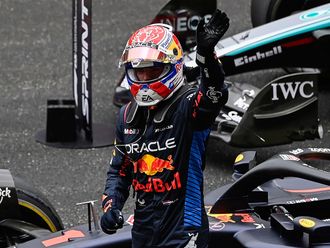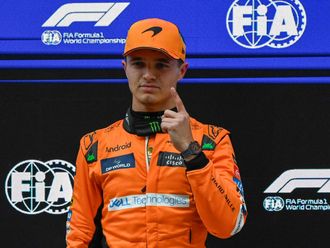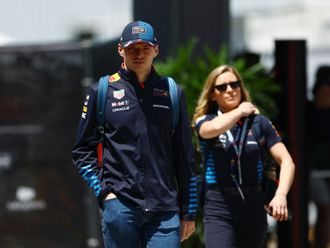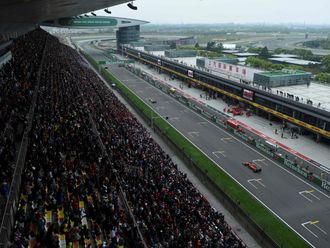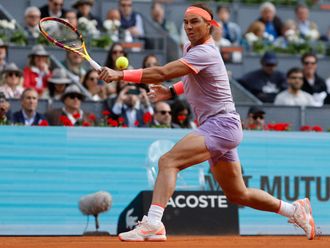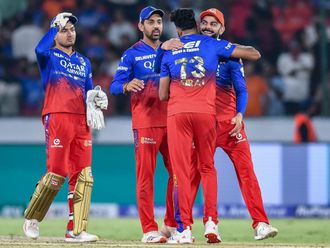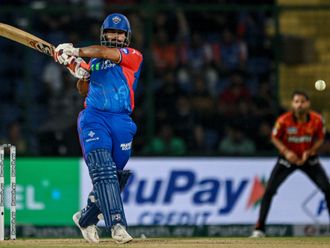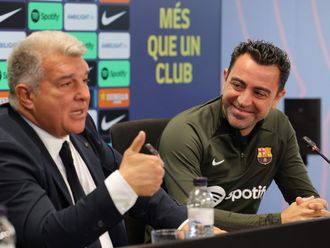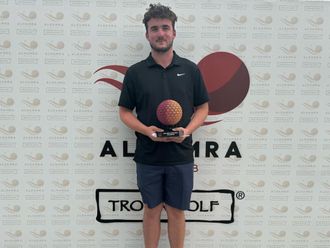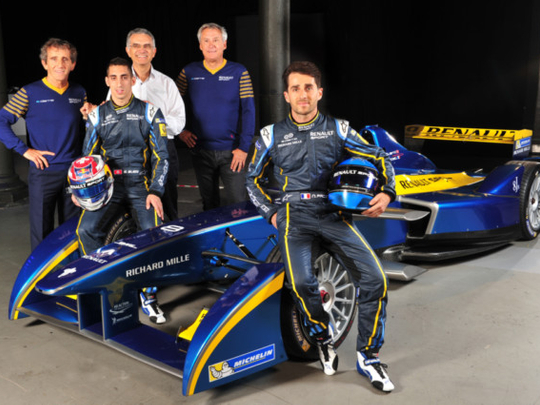
Abu Dhabi
The halcyon days of Formula One when Prost, Senna and Piquet lined up against each other on the starting grid were recalled last month.
This titanic trio dominated the sport in a fiercely competitive era, winning a combined total of nine world titles between 1981 and 1993.
Fast forward to the modern age and it’s their relatives — Alain Prost and Nelson Piquet’s sons Nicolas and Nelson respectively, and the late Ayrton Senna’s nephew Bruno — who are bidding to build on their illustrious forebears’ legacies on the track.
Except, that is, their wheel-to-wheel combat is not taking place in the rarefied realms of F1, but in a new and less supercharged alternative — Formula E — a championship for electric cars.
The 10-race street event, which started in Beijing on September 13 and visits locations such as Berlin and California before its finale in Battersea Park, London, on June 27, involves 10 teams of two drivers each.
Adding lustre to the pioneering championship is the fact that Prost Senior, legendary entrepreneur Sir Richard Branson and Hollywood superstar Leonardo DiCaprio are among the team co-owners.
But in an exclusive interview with Gulf News, four-time F1 world champion Prost insisted he had not got involved in the new venture to fuel his own ego, and spoke passionately about motorsport’s new kid on the track as a vehicle for developing electrical technology.
Competitive atmosphere
The Frenchman, who works for the e.dams Renault team, said: “We have a lot of ex-Formula One drivers and endurance drivers involved. But it’s really important to say that we have a really, really good rivalry in this series.
“It’s very competitive, but we have a good ambience. The fact we have the Senna-Prost names is good, but we just have to be careful that we do not change the objective of the series,” he said.
“Beating DiCaprio or Branson? I was never thinking about that,” he added. “I’m really thinking about where we are with Renault.
“We are talking about the development and talking about being closer to the people, to the young generation and trying to improve technology. We are in a very professional mode.”
Formula E teams have the same Spark-Renault SRT 01E car for the first season, but it will be an ‘open’ championship from next year, meaning teams can develop their own cars within FIA rules.
Technology priorities
The Williams Formula One team designed and built all the batteries in just a year. But the batteries only supply enough power for each car to last about half the one-hour races, so the team’s drivers have two — with pit stops used to facilitate the change to a new vehicle.
Wireless recharging is being investigated, but swapping batteries during a race has been ruled out for safety reasons.
It is hoped that some of the technology could be provided to electric road-vehicle constructors as part of a drive to promote non-polluting cars.
Prost said: “My motivation with Formula E is to be at the beginning of a very interesting project, based on this electrical technology. The most important thing is to develop this technology.”
It’s a laudable aim, but can Formula E compete with the motorsport behemoth that is F1, the supremo of which, Bernie Ecclestone, derided the new venture as akin to racing lawnmowers?
Prost said: “I know a lot of people in Formula One and they are looking at what we are doing, because they are losing some spectators and some interest. And they would like to understand maybe why Formula E could become a success.
“On the other side, we don’t want to be Formula One, I think that would be a wrong message. I already said to Bernie and other people: ‘Do not try to compare’. I am a big fan of Formula One, a big fan of the technology in Formula One. Formula E is different and I am very happy to have this development in parallel. I don’t think he’s going to be too negative and he’s got no influence in this.”
Sound and speed matter for motorsport fans, due to the visceral thrills they stir, and on both counts Formula E is outperformed by the bigger discipline.
F1 comparison
Formula E cars can reach speeds of 150 miles per hour, while 200mph is possible in F1.
In the noise department, at top speed they reach 80 decibels, 10 decibels louder than a normal car travelling at around 70mph.
Many F1 fans have hit out at the sport’s new V6 turbocharged engines being used this season, which do not create the same exhilarating sound as the V8 ones used previously.
So how would they react to Formula E? Prost, nicknamed ‘The Professor’ during his career due to his considered approach to the sport, offers a typically measured assessment of Formula E’s challenges.
“We can see both sides,” the 59-year-old said. “I was at Monza [for the Italian Grand Prix] and saw a lot of fans, especially Italians, who were really disappointed by the noise of Formula One. When I was at a test in Donington in England for Formula E, we could see a lot of Formula One fans from England who had no problem at all with the noise of Formula E. I think it depends a lot on the culture of the person and his or her mentality.
“I am not in favour of putting in artificial noise. If some fans are not interested, it’s not a problem.”
Formula E has introduced a range of initiatives aimed at engaging with people, particularly those of the younger generation, such as FanBoost.
This allows people to vote on social media for their favourite driver to give them an extra ‘speed burst’ during the race, which aids overtaking.
The three drivers with the most votes each receive one five-second ‘power boost’, temporarily increasing their car’s power from 150kw (202.5bhp) to 180kw (243bhp).
Prost acknowledged that such gimmicks, which supplement activities such as the interactive eVillages at the races and concerts, offered ‘something different’ in a bid to lure spectators.
He added that the fact that the sport, which is headed by successful Formula One businessman Alejandro Agag, is taking place in the middle of cities is also vital in this respect.
Entertainment options
“We don’t ask fans to come to us,” Prost said. “We want to go to the fans. That is why the entertainment and concerts during the event are very important and the races being held on the streets of cities helps get close to spectators.
“It has to be a mix between sport, technology and entertainment. The fact that we have two women racing [Katherine Legge and Michela Carruti] is also a positive thing.”
Prost believes the first Formula E race, held in Beijing last month, was ‘a big success’, despite his son being involved in a spectacular, final-lap collision with Nick Heidfeld.
This prevented Prost Junior from winning the 25-lap race, which he had led, and sent Heidfeld’s Venturi car careering off the track — causing it to flip over.
“We were very pleased with the first race; it was a big success,” said Prost. “We had a lot of people there, a lot of constructors, a lot of people looking at the technology.”
He added: “Nico’s performance was unbelievable, in qualifying and also during the race. It was a shame that we had a little problem with the radio communication at the end.
“He was reading something different on his dashboard compared to what we told him. He slowed down on the last lap. He could have been much quicker and he was surprised on the last corner, he did a mistake.
“It was a racing incident, but it was obviously a big disappointment for him and for me and for the whole team.”


